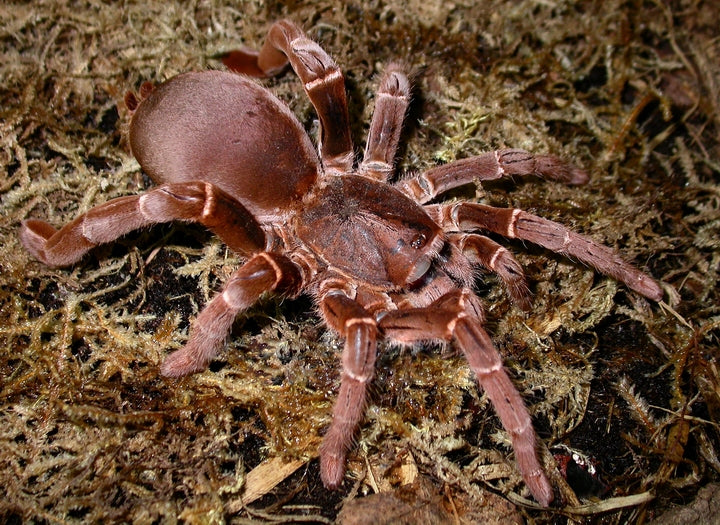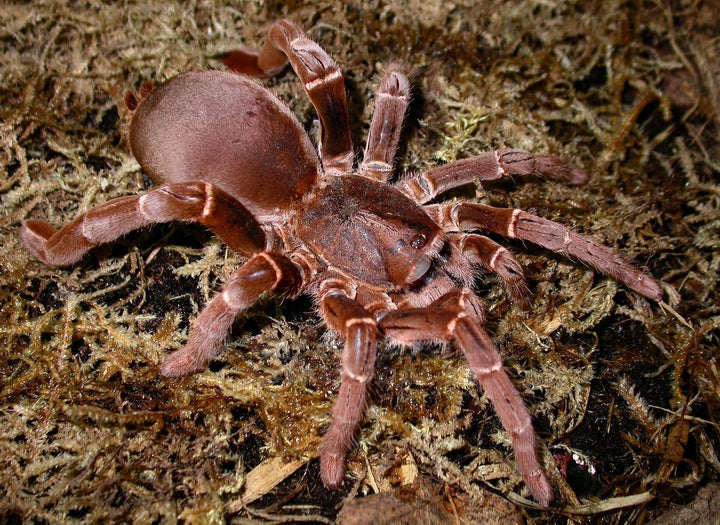Tarantuladen.co.za
King Baboon (Pelinobius Muticus)
King Baboon (Pelinobius Muticus)
Out of stock
Couldn't load pickup availability
This is the heavyweight champ of African tarantulas. The King Baboon brings a prehistoric, armored look and a no-nonsense temperament. It's a powerhouse burrower, a tank in personality and appearance — and definitely not afraid to throw up a threat pose if you mess with its turf.
Quick Facts
Common Name: King Baboon
Scientific Name: Pelinobius muticus
Origin: East Africa (Kenya, Tanzania)
Size: Up to 8 inches (20 cm) leg span
Lifespan:
- Females: 20–25+ years
- Males: 5–8 years
Temperament: Defensive, reclusive, and very territorial
Coloration
Burnt orange to rusty brown — almost coppery
Thick, powerful legs and dense body hair give it a “tanked-up” look
Slight iridescence under certain lighting
Juveniles often duller, but color intensifies with age
Housing & Care
Enclosure Type: Terrestrial deep burrower — 10"+ substrate is ideal
Substrate: Moist, compactable mix (coco fiber, topsoil, clay blend)
Humidity: 60–70%, keep the burrow area humid
Temperature: 75–85°F (24–29°C)
Decor:
- Start with a deep starter burrow — it’ll take it from there
- Minimal decor needed, but a few anchor points (bark, moss) help
- Keep the vibe dry on top, damp below — classic arid burrower
Expect deep tunnels and almost no surface activity. They love their underground fortress.
Feeding
Diet: Roaches, crickets, mealworms — even small locusts
Feeding Schedule:
- Slings: 2–3x/week
- Juveniles: Weekly
- Adults: Every 10–14 days
Bold eater — strikes fast, especially if near the burrow entrance
Why It’s Legendary
One of the most iconic old-world tarantulas
Insanely impressive burrowing behavior
Thick, armored look makes it a favorite for hardcore collectors
Known for drumming — yes, it "stridulates" by rubbing legs to warn threats
Long-lived and slow-growing — a serious commitment
Notes
Not for handling — strong threat posture, will bite if provoked
Strong fangs and potentially painful bite (no known fatalities, but ouch)
Needs deep, humid substrate to thrive
Mostly reclusive — a pet hole, but a fascinating one
Share


